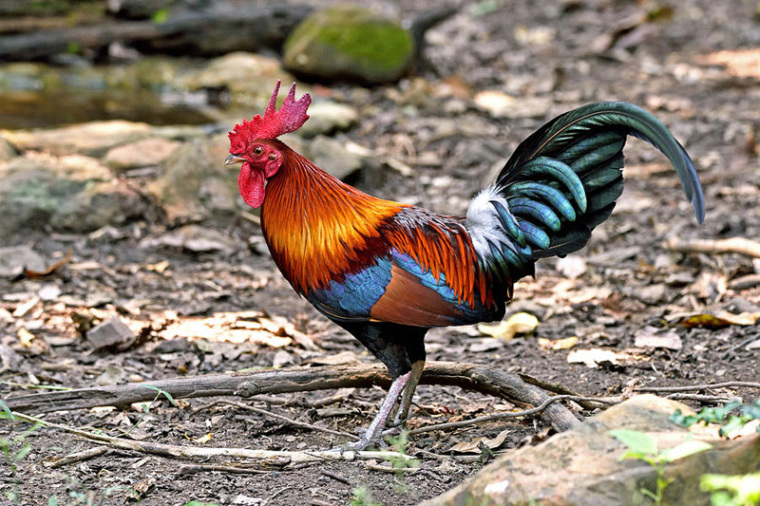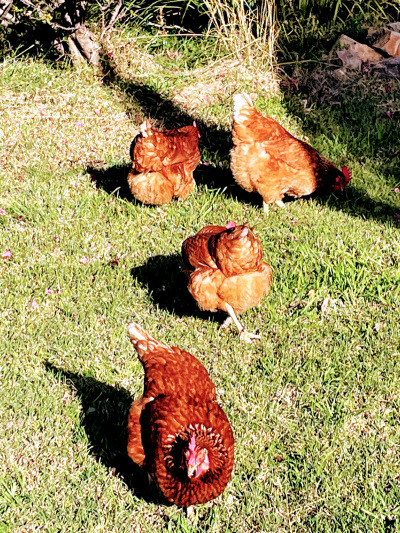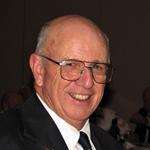
If you are reading this article from outside Australia or New Zealand, you may not know what a ‘chook’ is. Well, it’s a domestic fowl, a chicken.
The word chook comes via a British dialect chuck(y), meaning a chicken or fowl, a variant of chicken. It’s a common term for a live bird,although chook raffles held in Australian clubs and pubs, have ready-to-cook chooks as prizes.
Backyard chooks
In Australia when I was growing up, every second backyard had chooks for egg production. It was common practice and those who chose to breed their own, a rooster was also common.
Roosters are no longer as common in suburbia due to their early morning ‘wake-up’ calls and most municipal councils have restrictive regulations which mainly relate to noise and the number of hens which can be kept.
It’s a different story in rural and regional Australia where, provided the owner doesn’t sell the eggs, flock sizes rarely matter.
At home, we always had chooks as far back as my memory will take me and we did breed our own replacements. The hen chicks went on to be layers, the male chickens ended up on the dinner table.
My dad was a strong believer in the Leghorn (white) breed for eggs and he usually had a few Australorps (black) for eating as they laid good eggs but were a heavier, meatier bird.

Buying my own
I was still in the army in the 1970s when I started with my own chooks and by then, a cross-bred type of bird was the ‘flavour of the month.’ They were mainly white with black patches and we bought them as point-of-lay pullets, about 16 to 18 weeks of age. I bought them from a hatchery which supplied large, professional egg producers so they were, at the time, the best laying birds available.
While these birds were good layers, the breeder told me about hens overseas which were far more prolific layers but couldn’t be brought into Australia for quarantine reasons. He also wondered how long it would be before someone smuggled semen into the country concealed in a fountain pen.
Back in Queensland just over 40 years ago and we bought some (backyard) hens. They were (then) called the Australian commercial laying hen and the difference was dramatic. These birds laid an egg every day for almost a year and I sometimes kept them for another season but they had a propensity to die before they reached three years.
Smugglers?
Semen or fertilised eggs had made it into Australia and the production of eggs skyrocketed.
At the same time, meat chickens or ‘broilers’ also made their way onto the market and almost unbelievably, they were ready to eat at eight weeks or perhaps a few more.
These are the eating birds you buy at the supermarket or fast-food restaurants.
There are so many breeds of hens now, both for eggs and meat, one has to wonder how this could happen from the wild little red junglefowl of south-east Asia, two of which probably travelled on the ark with Noah.
Horses too
We humans have certainly changed these birds just as we have changed cattle into dozens of breeds for meat and milk, dogs into even more breeds, cats, how many different types, of course my favourite animals, horses, from huge shires to miniature horses, then there’s sheep and goats, pigs, check out caged budgies against those flying wild, a big change in type and on it goes.
Although Noah’s Ark was a huge floating zoo, there is no way he took all these variations of animals with him – in the 4,500 or 5,000 years since The Flood, we humans (and with help from different environments), have taken on the role of ‘god’ in altering the types of various breeds to suit ourselves and in many cases, have been quite successful at making them into what we wanted or needed.
God gave us charge over all the animals including fish and birds: -
God blessed them, and God said to them, “Be fruitful and multiply, and fill the earth and subdue it; and have dominion over the fish of the sea and over the birds of the air and over every living thing that moves upon the earth.” (Genesis 1:26-28)

John Skinner served as an infantry soldier in Vietnam then the Tasmanian Police before taking up the position of CEO of the Australian Rough Riders Association (professional rodeo based in Warwick Qld). Before retirement to his small farm, he was a photo-journalist for 25 years. He is married with 3 children and 7 grandchildren.